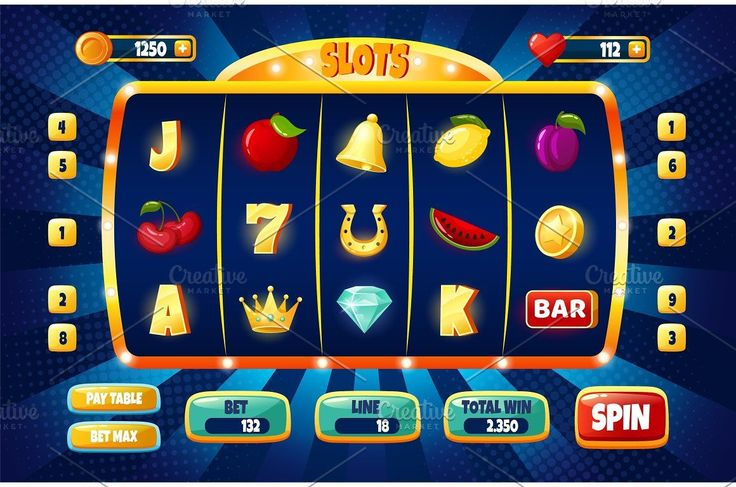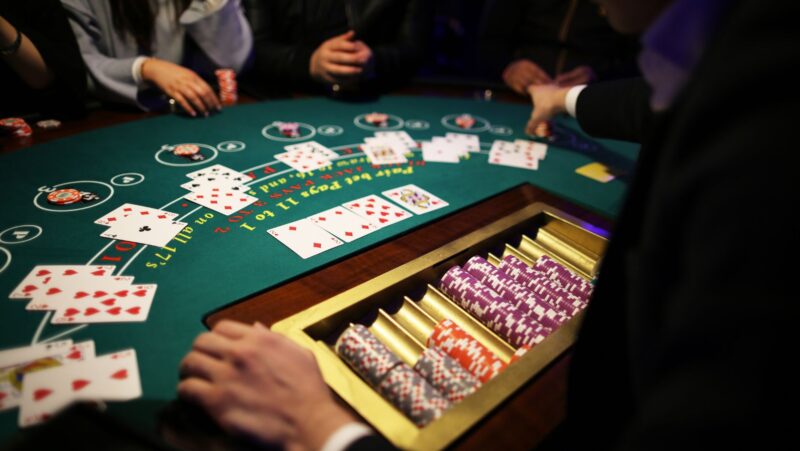
Video games and slot machines share more similarities than one might expect. Slots and loot boxes both create a sense of anticipation, suspense, and chance-based reward. At first glance, they seem nearly identical. Major distinctions separate them, though. An understanding of these mechanics is important for players, designers, and regulators examining the impact of chance-based systems. In discussions about luck-based play, still more go so far as to call the opening of a loot box some kind of spin macho moment — exaggerated procrastination before the outcome that’s reminiscent of slot reels slowing down.
This piece dives into how loot boxes and slots function, what they share, what they don’t, and how gamers view both.
The Core of Randomized Rewards
Both loot boxes and slot machines rely on randomness. The player cannot know what will occur, and thrill comes from not knowing. The distinction lies in how the randomness is presented.
Loot boxes appear in video games, typically disguised as packs, crates, or chests. They must be opened using a virtual or real-world currency. Players may get cosmetic items, weapons, or other digital rewards within.
Slot games occupy casinos or websites. A player wagers cash, pulls a handle (or presses a button), and hopes the reels will stop. Successful sets of symbols pay out.
Both systems exist on suspense. The anticipation to see the box open or reels stop is suspense and is at the center of the experience.
Shared Psychological Triggers
Both systems’ designers use the same psychological tools to keep people’s attention and allow for repeated interaction.
Variable-ratio reinforcement
Both employ the same schedule of rewards employed by behavioral psychology. A player can never know when the next win will be, and that keeps high involvement.
Near misses
Slot machines prefer to show results that are almost a winning line. Loot boxes do the same by showing regular rewards with a far-off one momentarily flashing, which makes it seem like the player almost had it.
Sensory feedback
Vibrant colors, animation, and sound effects show rewards. Sounding of slot reels or cinematic animation of loot box both make the moment of reveal more dramatic.
Collection appeal
Loot boxes insert a component of gathering occasional items, like the way slot machines might have progressive jackpots or extra features.
Mechanical Differences in Structure
While the psychological triggers meet, the mechanisms operate differently.
| Feature | Loot Boxes | Slot Machines |
| Currency Used | Game currency or real money | Real money only |
| Payout | Virtual goods with no real value | Cash prizes or credits |
| Skill Involvement | None (random outcome) | None (random outcome) |
| Display of Odds | Sometimes expressed, often vague | Generally controlled |
| Use Context | Recreation within a larger game | Independent product |
The following table indicates the most significant difference: loot boxes reward in-game items in a virtual environment, but slot machines reward cash.
Differences in Regulation
One of the most controversial aspects involves regulation. Slot machines are subject to strict legislation, such as obligatory disclosure about odds, payout percentages, and responsible gaming programs. There are limits set by regulators for where they are used and how they are deployed.
Loot boxes sit in a gray zone, though. Because they dispense virtual goods rather than money, some jurisdictions don’t consider them gambling. Others have argued that the mechanics are similar enough to casino-style gaming that they should be regulated. In some regions, regulators now require revealing the odds of loot box contents, but enforcement varies.
The Role of Player Perception
Gamers experience loot boxes and slots differently. To some, the loot box is part of the game. The virtual reward has value within the in-game community whether or not they have value outside. Gamers can seek a cosmetic for prestige, not for profit.
Slot gamblers gamble with the explicit promise of currency. The reward has physical consequences. This flat-out monetary component distinguishes slots in perception and motivation.
However, there are intersections. Some players consider loot boxes as gambling, especially if one can sell or trade for rare items. The uncertainty sparks controversy regarding whether loot boxes exploit gambling tendencies.
The Economics Behind the Systems
Both mechanics generate income through encouraging repeat engagement. In the case of loot boxes, the business model is to complement or replace initial game purchase. They are developed to sustain cash flow on a recurring basis. Repeated spending is driven by cosmetic rewards, seasonal content, and ever-rotating content.
The slot machines are built on continuous wagers. The design revolves around keeping the player at the machine, repeatedly pressing the button. Payouts from the casinos are designed so that there is a balance between arbitrary winnings and the house advantage.
The fiscal similarity is in the guise of microtransactions and persistent expenditures. Both the reward cycles create a scenario where players spend more than they initially intended.
How Probability Is Framed
The definition of probability is central to the manner in which individuals perceive risk.
Slot machines tend to display payback percentages and odds in clear ways. For example, a certain machine might provide a 95% return over the long term. This doesn’t guarantee individual wins but acquaints the player with average rates of loss.
Loot boxes rarely are as specific. A box might have a 1% opportunity of holding a rare item, but games will often describe this in fine print, if it is mentioned at all. Transparency has been condemned by consumers and players.
This inequality changes the way players evaluate fairness. The inability to provide concrete odds makes loot boxes more manipulative, while slots must provide legally required expected returns.
Social and Cultural Aspects
The social use environment defines what individuals perceive these mechanisms to be.
- Slots: Casinos, gambling culture, and adult environments. They’re stigmatized in certain cultures but mainstream entertainment in others.
- Loot boxes: Employed in a broad range of games, even for children. They appear less frightening and more socially acceptable, but alarm is caused when children encounter them.
This paradox engenders ongoing controversy regarding gambling-like systems exposure at earlier and earlier ages.
Variations in Reward Persistence
Rewards also differ in persistence and portability.
Loot box prizes are locked away in a specific game. When the game falls into disfavor or goes out of business, the prizes vanish with it.
Slot machine jackpots, whether small or huge, instantly become cash. They possess long-term real-world value.
This difference in persistence explains why authorities treat them differently. However, when in virtual economies uniques are traded for cash on secondary markets, the line is blurred.
The Experience of Anticipation
Both mechanics take the suspense of expectation for a reveal. A turn of the slot machine or an animation for loot box intrigues the player. The experience diverges in purpose, though.
- Slot machines create suspense for immediate financial return.
- Loot boxes have a tendency to create suspense for gaming improvement or prestige.
In both, suspense is the key emotional driver, but the setting of reward alters its impact.
Risks for Players
Both systems carry risk with excessive use. For slot machines, the risk is loss of money, addiction, and related social harm. For loot boxes, the risks are overspending for virtual goods, exposure of younger players to gambling-like systems, and distorted value perceptions.
Indications of high-risk use overlap: chasing rare wins, money being spent without awareness, and building compulsive routines. Convergence of risk is why researchers track both.

Strategies Used by Designers
Slot and game designers both use focused strategies to engage players maximally:
- Reward tiering: Both use layers of ordinary, uncommon, and legendary rewards. The most rare items or jackpots make individuals keep searching.
- Time-limited content: Loot boxes rotate products to trigger spontaneous purchase decisions. Slots sometimes utilize promotional jackpots or bonus rounds.
- Visual pacing: Animations slow down prior to the result being displayed, building suspense. Such pacing heightens the sense of near-miss and maximizes emotional impact.
- Accessibility: Loot boxes are unobtrusive within gameplay, and slot machines remain available in gambling environments. Both are nonetheless designed for ease of repetition.
These strategies expose the deliberate design of the thrill.
The Debate Around Classification
The debate today is whether or not loot boxes are a form of gambling. The regulators argue that the mechanics are too reminiscent of the slot machines to ignore. The opponents argue that since rewards don’t include real money reward, they are inherently distinct.
Governments across the world are still studying the issue, and some already have stricter regulation. The debate will continue to linger as game economies expand.
Conclusion
Slot machines and loot boxes share more than most gamers are aware. Both use randomness, psychological reward, and suspense to drive play. Both create anticipation-reward loops. Yet differences in regulation, payout structure, cultural perception, and reward duration distinguish them.
Comparing the two in this way shows not just how games and gambling machines affect behavior, but also why society is arguing about their place. Whether for virtual bragging rights or profit, the excitement of the reveal makes players return for more. Learning about these systems allows players to make educated decisions and policymakers to craft equitable rules.
To some, loot boxes are innocuous entertainment. To others, they ring familiar dangers of slots. As controversy boils, one thing is certain: the same psychological processes that lend hold of random reward to their addictive allure are at work behind loot boxes and slots, both in a game or on a slot floor.











